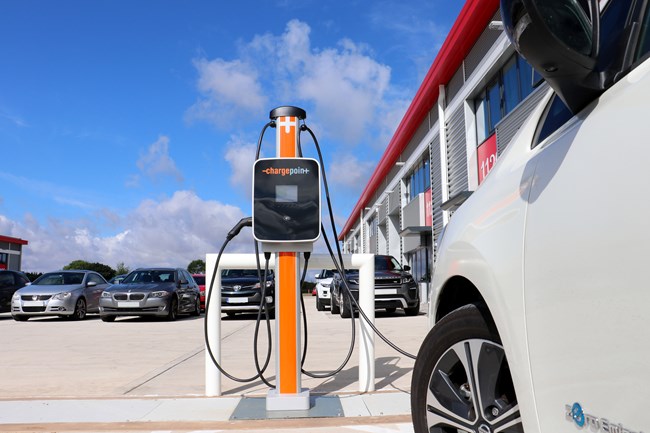We use cookies to ensure that we give you the best experience on our website. If you continue without changing your settings, we will assume that you are happy to receive all cookies on the Business Car website. However, if you would like to, you can change your cookies at any time

The start point for the best source of fleet information |
Joe Gorman's blog: The rise of motor pools? The future of company cars and fleets post-Covid
Date: 03 August 2020

As countries around the world contemplate the new normal post-lockdown, companies are rushing to understand the impacts on their business. Staggered schedules, temperature checks and socially distanced desks are set to become the new normal as employees return to workplaces.
For many, they are unlikely to soon or ever return to work in the same way they did previously. This means less commuting, working from home more and a large number of company cars, van and truck fleets sitting idle or with very little utilisation, costing thousands in maintenance and devaluation whilst offering little income.
So, whilst employees are having to adapt to this changing world, fleet managers are having to come up with new strategies to make their fleets viable. Motor pools, instead of individual, dedicated vehicles can offer enormous cost savings and other benefits, electrifying these vehicles can double down on these benefits.
Motor pools have long offered the ability to increase fleet utilisation. Modern fleet management software means that drivers are able to reserve vehicles online, see what vehicles are available for their desired time slots and reserve a particular vehicle or type of vehicle at the click of a button.
This software can be integrated with smart charging infrastructure, meaning it is possible for drivers to not only choose the vehicle fit for their needs but be assured that it has a full charge and is capable of making their round.
Say your vehicles typically leave at 6am, and assume all need at least a 95% state of charge, this being a worst-case scenario. If you have fleet management system integration, the charging system will be able to adjust the charging rates and timing for each vehicle, based on vehicle-specific scheduled departure times and route lengths.
It can then decide which vehicle gets priority charging and when any given vehicle can finish, safe in the knowledge that all will make their rounds the following day. This offers savings on operating expenses - charging can be optimised to take place in the hours when electricity is cheapest, whilst offering a longer charging window.
This is on top of the significantly lower fuel cost of EVs versus ICE cars - often 50% or more - which alone can result in thousands of pounds in savings annually on a single-vehicle. Thanks to fewer moving parts (around 20 versus more than 2,000 for a typical ICE vehicle), EVs also have far lower maintenance costs (one-third by some estimates) as well as better resale value.
Companies can also offer the ability for employees that take vehicles home for the evening to charge there and be automatically reimbursed for their electricity use, saving fleet owners the potential costs of upgrading fleet connections. Through roaming agreements, they are also able to access over 130,000 public charging spots across Europe. This can be seen in the same light as fueling cards, ensuring that your vehicles are always able to be filled up anywhere, whilst offering a simple and reliable accounting structure.
BEVs are expected to reach cost parity with ICE vehicles early this decade. But upfront costs are just one consideration, as the current real cost of BEVs is often already lower thanks to generous government incentives on both the cars themselves and the necessary charging infrastructure.
If that weren't enough, there is another way organisations can save with zero-emission BIK tax. All told, the cost savings of an EV versus an ICE vehicle can be upwards of 70% per mile.
For the above reasons and a plethora of green arguments, replacing traditional fleets with EVs as we move from the current battle against Covid-19 is integral to ensuring cost-effective operations. Whilst the benefits for business seem obvious, those offered to society maybe even more important.
Joe Gorman is UK and Ireland director for ChargePoint











